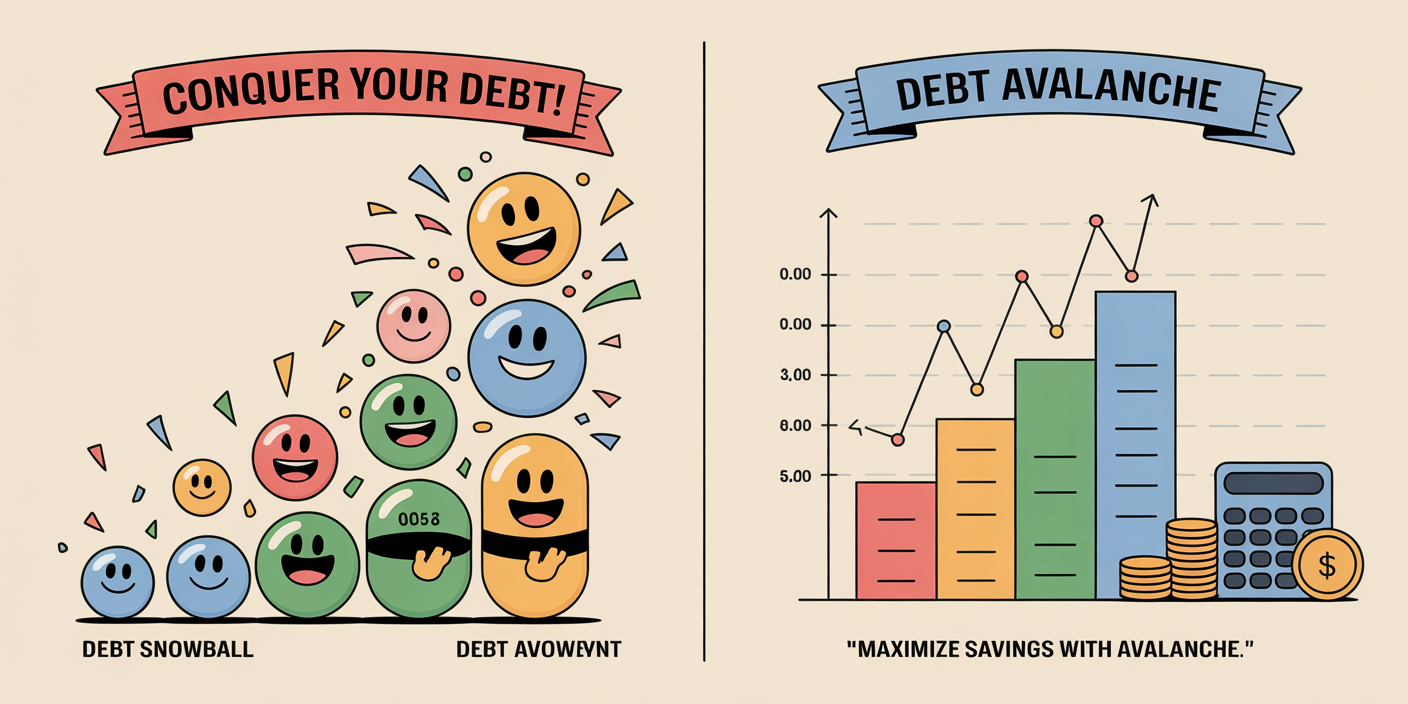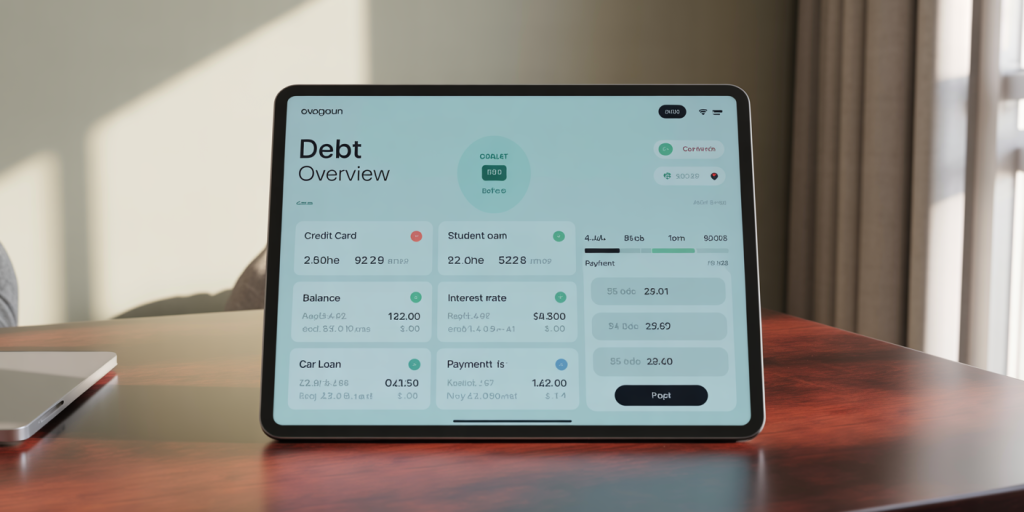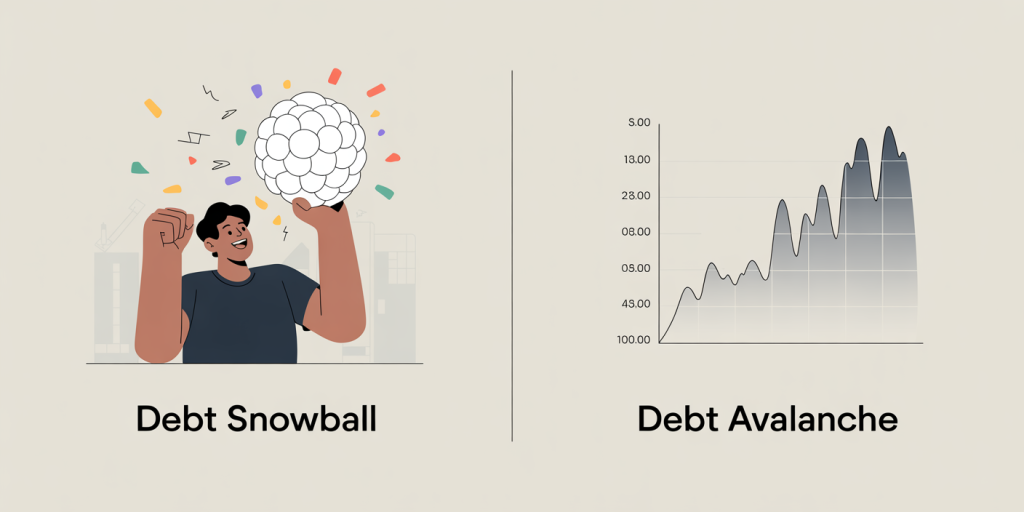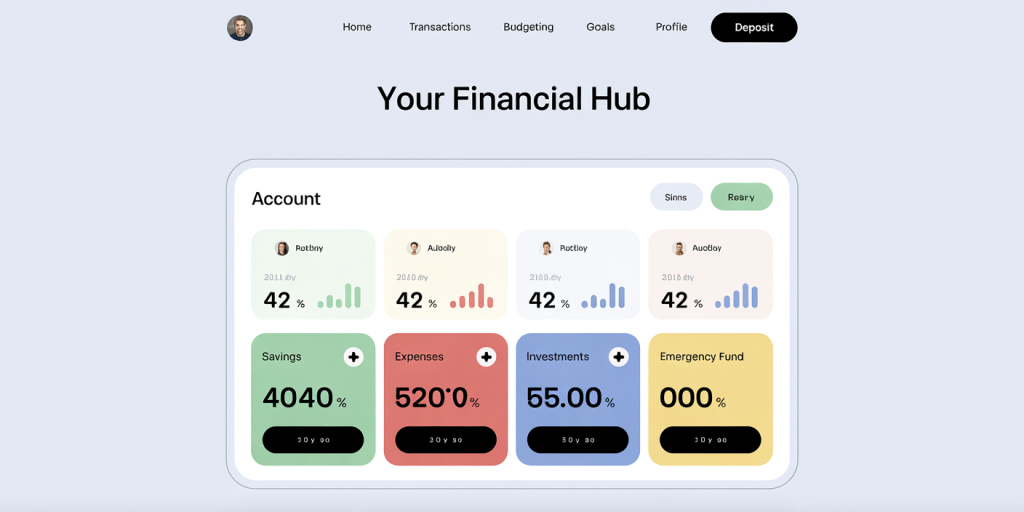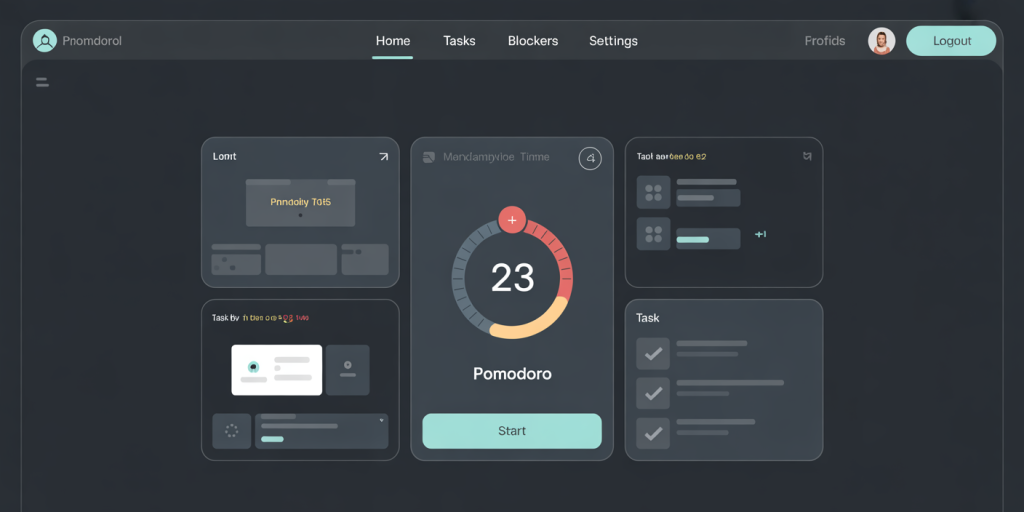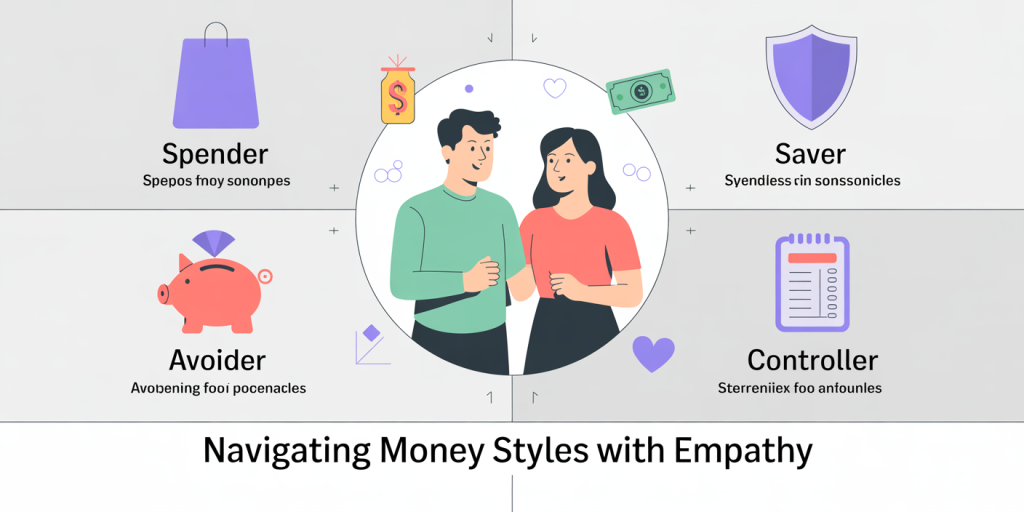In today’s fast-paced economic environment, understanding personal finance is more important than ever. One financial phenomenon that often catches individuals off guard is lifestyle creep—a subtle yet powerful force that can erode financial stability without conscious realization. As income increases, many people tend to upgrade their standard of living incrementally, often leading to greater expenses that match their earnings. This phenomenon, known as lifestyle creep, can prevent individuals from building savings, investing wisely, or achieving financial independence.
Lifestyle creep is not necessarily about reckless spending; instead, it’s characterized by gradual adjustments in spending habits that seem justified by incremental income improvements. This article explores what lifestyle creep is, how it can impact your finances, and practical strategies to avoid falling into its trap. With statistics, real-life examples, and actionable advice, readers will gain a deeper understanding of maintaining financial discipline amid rising income.
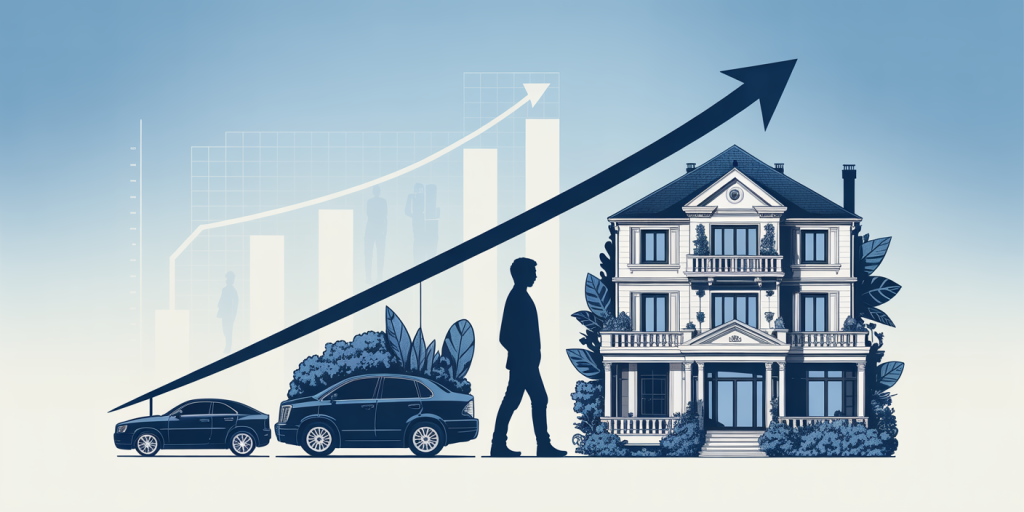
Defining Lifestyle Creep: The Subtle Shift in Spending Behavior
Lifestyle creep, sometimes referred to as “lifestyle inflation,” occurs when an individual increases their discretionary spending as their income grows. For instance, a person who receives a 10% salary increase may upgrade to a more expensive car, dine out more frequently, or subscribe to premium entertainment services. While these adjustments might seem reasonable or even necessary, they cumulatively chip away at potential savings or investment capital.

A 2020 survey by Bankrate revealed that 63% of Americans feel they are not saving enough money, despite many receiving periodic raises. The psychology behind lifestyle creep is rooted in adapting to new financial circumstances by expanding one’s consumption patterns, which makes saving progressively difficult. Over time, expenses rise in tandem with income, effectively nullifying the financial benefits of earning more.
Real-Life Examples Illustrating Lifestyle Creep
Consider Sarah, who recently received a promotion and a 20% salary increase. Rather than saving or investing this additional income, she upgraded her apartment, purchased designer clothes, and increased her monthly entertainment budget. As a result, Sarah’s monthly expenses rose to nearly match her take-home pay, leaving her with little savings. Meanwhile, John, a colleague with a similar raise, chose to allocate half of his raise toward an emergency fund and retirement accounts, while moderately enhancing his lifestyle. Ten years later, John enjoys a robust financial cushion, whereas Sarah struggles with unexpected expenses and little in savings.
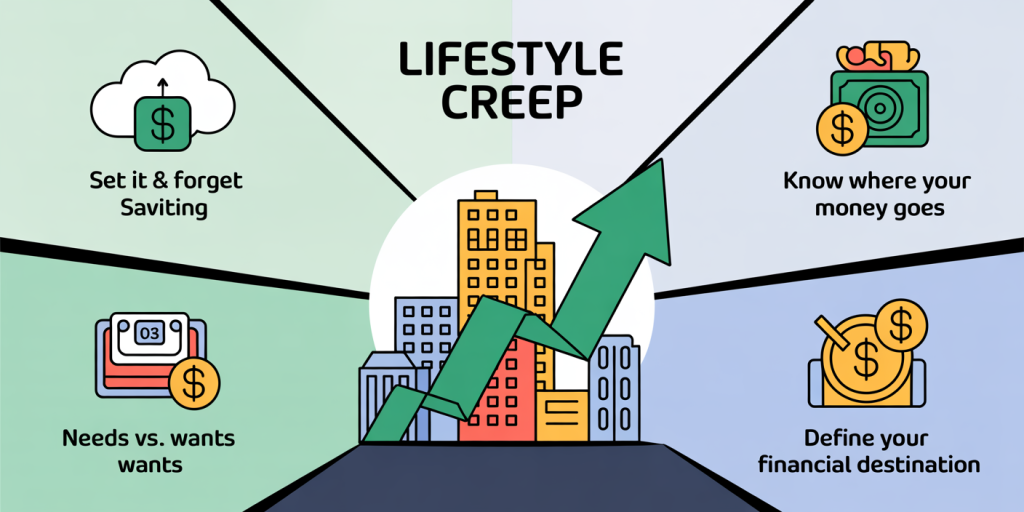
Another example is the phenomenon seen among professionals like doctors or lawyers. According to a 2019 study published in the Journal of Financial Planning, physicians’ expenditures tend to outpace their income growth significantly during their early career stages, largely due to lifestyle upgrades such as luxury vehicles and costly housing. This can delay long-term wealth accumulation and undermine financial goals.
These cases underscore the importance of awareness and intentionality in managing new income and resisting the urge to upgrade lifestyles automatically.
How Lifestyle Creep Affects Financial Goals and Stability
Lifestyle creep’s impact transcends just reduced savings; it can fundamentally alter an individual’s trajectory towards financial independence. When expenses increase in conjunction with income, the marginal utility of additional earnings diminishes. This means more income goes toward maintaining a higher living standard rather than building assets or reducing debts.
For example, suppose an individual’s monthly income rises from $4,000 to $5,000, but their expenses grow from $3,500 to $4,800. In this case, the additional $1,000 income produces only $200 additional disposable income, a marginal savings rate far below recommended financial planning targets which usually suggest saving 20% or more of income. Over the long term, such incremental lifestyle inflation can slow wealth accumulation, delaying milestones such as homeownership, retirement, or debt payoff.
Financial advisor Michael Kitces warns that lifestyle creep is a major contributor to early career professionals feeling “cash poor” despite high incomes. The illusion of wealth can lead to stress, impulsive borrowing, or even financial crises when unexpected events occur. Hence, controlling lifestyle inflation supports resilience and flexibility, key components of financial health.
Identifying Triggers and Psychological Drivers
Understanding what triggers lifestyle creep can empower individuals to control it. Several factors contribute to lifestyle inflation: Social Comparison: Keeping up with peers’ consumption habits often pressures individuals to upgrade their own spending to maintain social status. Perceived Rewards: Many people feel entitled to “reward” themselves following career achievements or salary hikes, inadvertently increasing recurring expenses. Loss Aversion to Downgrading: Once accustomed to certain conveniences or luxuries, reducing them can feel like a loss, even if it improves financial health. Lack of Budgeting: Without strict budget oversight, incremental spending increases can go unnoticed.
Research from the University of Chicago’s Booth School of Business found that people derive less happiness from material consumption as incomes rise, yet still change spending behaviors in pursuit of societal signaling or comfort. This bittersweet paradox highlights that lifestyle creep may satisfy short-term emotional needs but compromise long-term goals.
Strategies to Avoid Lifestyle Creep and Maintain Financial Discipline
Avoiding lifestyle creep requires deliberate planning and self-awareness. Here are key strategies: Automate Savings: Direct a fixed percentage of income to savings or investment accounts before accounting for discretionary spending. Automation ensures that lifestyle upgrades don’t eat into the potential savings. Set Financial Goals: Clearly define short-term and long-term objectives such as emergency funds, retirement targets, or debt repayment schedules. Concrete milestones motivate restraint in spending. Create and Monitor Budgets: Use budgeting apps or tools to track expenses monthly. Awareness helps spot creeping expenses before they spiral. Mindful Spending: Evaluate purchases by asking if they add meaningful value or simply gratify impulse or social comparison. Incrementally Reward with Limits: If rewarding yourself after raises, do so within pre-defined financial limits. For example, allocate only 20% of a raise increase to lifestyle improvements. Practice Gratitude and Contentment: Psychological research suggests that gratitude journaling and focusing on intrinsic values reduce the urge for material consumption.
Comparative Table: Lifestyle Creep Prevention Tactics
| Strategy | Description | Expected Outcome | Example |
|---|---|---|---|
| Automate Savings | Automatically transfer funds to savings or investment | Build wealth passively and consistently | 20% of paycheck goes directly to 401(k) |
| Set Financial Goals | Establish clear monetary targets | Increased motivation and financial clarity | Emergency fund of $10,000 in 12 months |
| Track Expenses | Use apps or spreadsheets to monitor monthly spending | Identify unnecessary expenses and reduce them | Monthly review finds $50 unnecessary subscriptions |
| Mindful Spending | Regularly question purchasing motives | Minimize impulsive and status-driven buys | Decline expensive dining in favor of meal prep |
| Reward Within Limits | Limit lifestyle upgrades to a fixed portion of raises | Balance enjoyment with financial prudence | Allocate 10% of raise to new hobbies or travel |
| Practice Gratitude | Reflect on non-material fulfillment | Reduced desire for excess material goods | Daily journaling of three positive experiences |
The Role of Financial Education and Professional Advice
Financial literacy plays an essential role in combating lifestyle creep. A report from the FINRA Investor Education Foundation underlines that only 17% of adults in the U.S. are considered highly financially literate. Without knowledge of budgeting, debt management, and investing, individuals are more susceptible to spending beyond their means and succumbing to inflationary lifestyle habits.
Professional financial advisors can offer personalized guidance tailored to income levels, goals, and life stages. Regular check-ins help hold individuals accountable and encourage adjustments to spending behaviors. Further, advisors can recommend tax-efficient savings plans, debt reduction strategies, and balanced investment portfolios. Even basic financial education programs conducted by employers can significantly reduce lifestyle creep by empowering employees to manage raises responsibly.
Projecting the Future: Managing Lifestyle Creep in a Changing Economic Landscape
Looking ahead, addressing lifestyle creep grows more critical as inflation rates and living costs rise globally. According to the U.S. Bureau of Labor Statistics, the Consumer Price Index increased by 6.5% in 2023, the highest in four decades. In such conditions, individuals face pressure to maintain lifestyles amid rising prices, which may inadvertently accelerate lifestyle inflation.
The increasing prevalence of digital subscriptions, online shopping, and instant gratification apps heightens the temptation of lifestyle creep. Future financial planning will need to integrate behavioral economics principles to develop automated and user-friendly tools that encourage saving over spending. For example, AI-driven budgeting apps can proactively alert users when spending trends exceed typical norms or goals.
Moreover, societal shifts towards minimalism and sustainable living may redefine success away from material accumulation. Brands and policymakers are slowly promoting financial wellness initiatives to combat consumerism’s pitfalls. Early adopters of disciplined financial habits are likely to experience compounded benefits and greater resilience in uncertain economic times.
Ultimately, persistent self-awareness, ongoing education, and technological support will play pivotal roles in mitigating lifestyle creep. Individuals who proactively guard against creeping expenses and prioritize financial well-being will be better positioned to enjoy sustainable wealth and security.
—
By grasping the nature of lifestyle creep and implementing strategic practices to avoid it, individuals can harness increased income to build lasting financial strength instead of being ensnared in a cycle of rising expenses. This conscious approach represents the cornerstone of achieving and maintaining long-term financial freedom.

